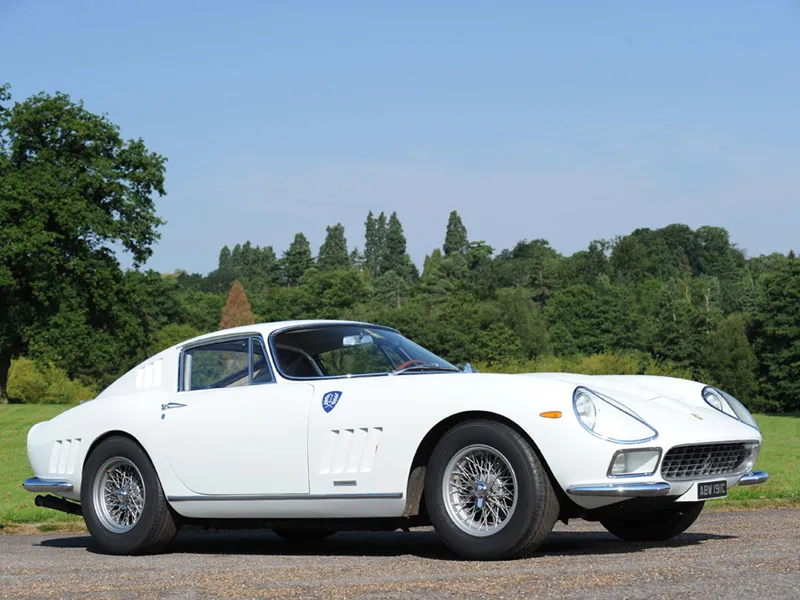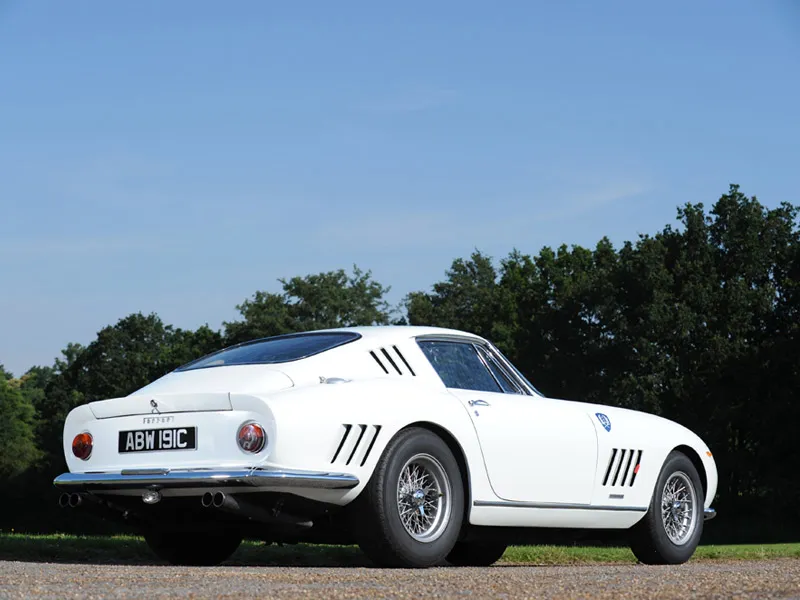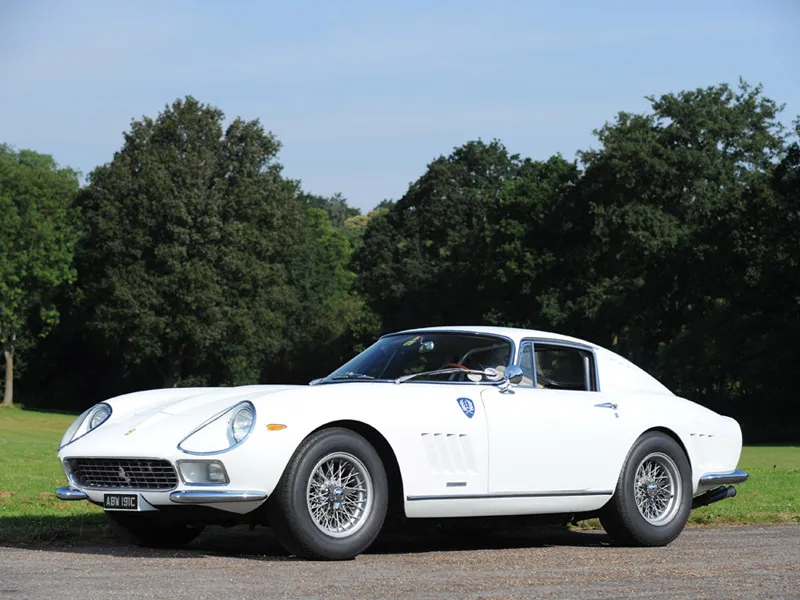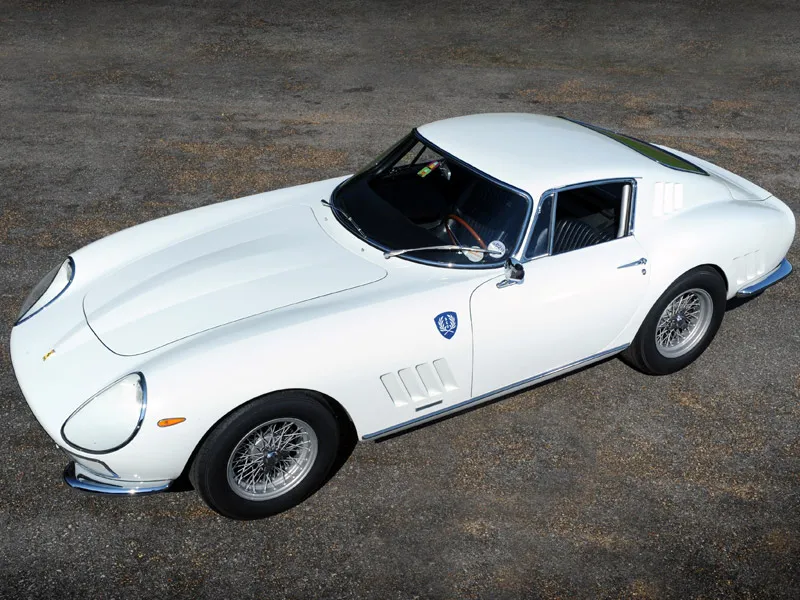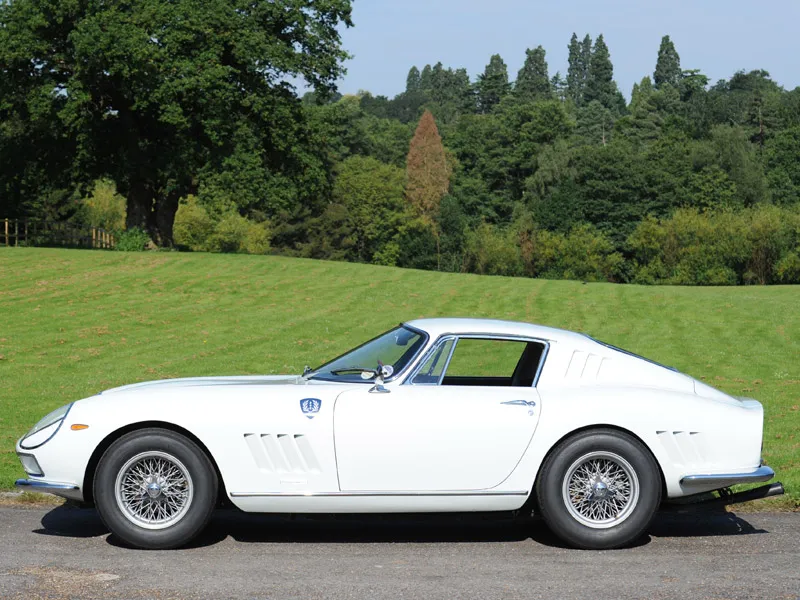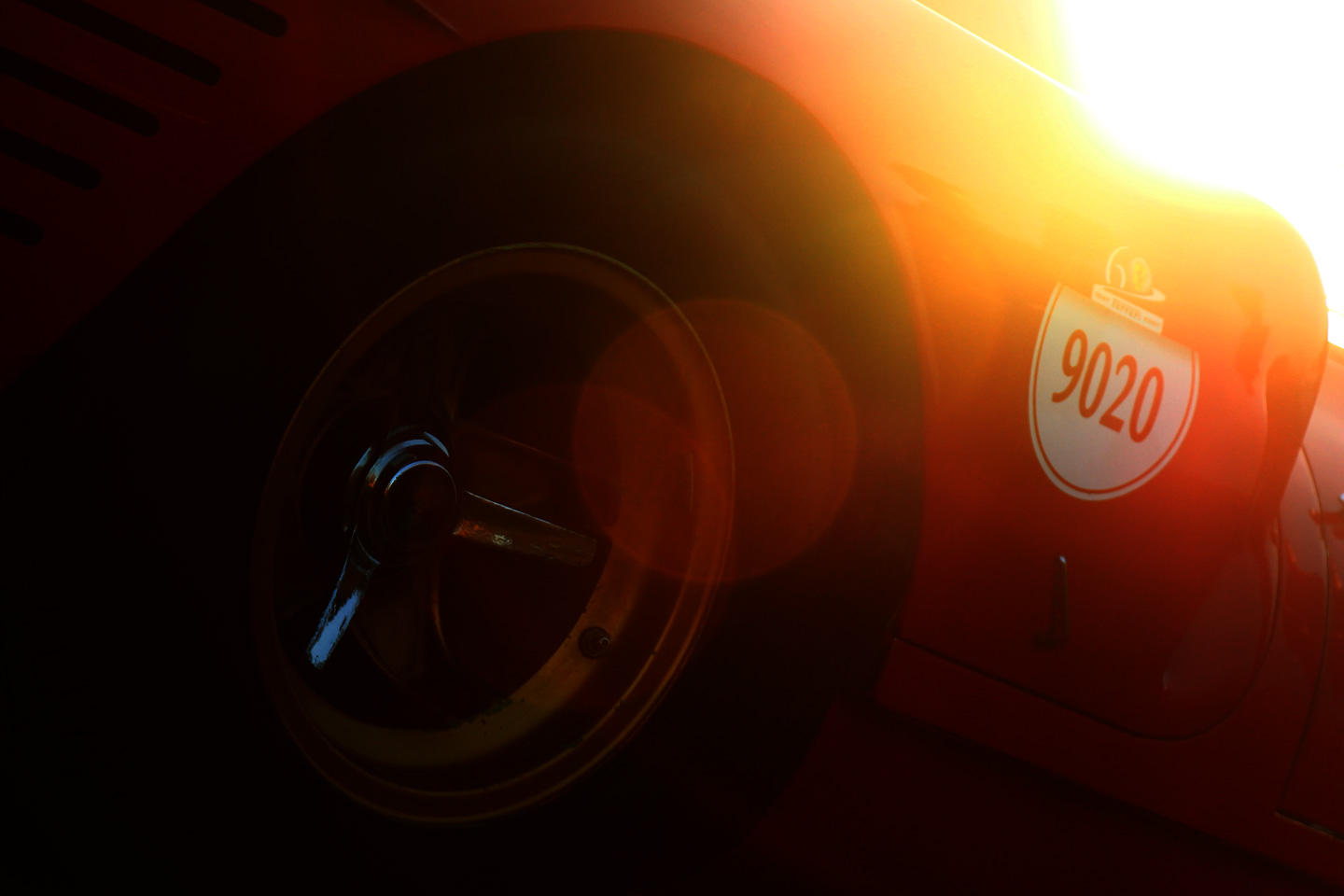Ex-Count Zanon di Valgiurata, original six carburettor
1965 Ferrari 275GTB/6C Berlinetta
Coachwork by Pininfarina
Chassis No. 07085GT
Successor to the 250 Series and first seen in 1964, the Ferrari 275 embodied a number of technical innovations. While the chassis of the 275GTB berlinettas and 275GTS convertible followed Ferrari’s established practice, being a multi-tubular frame tied together by oval main tubes, for the first time on a road-going Ferrari there was independent rear suspension, the latter employing a double wishbone and coil-spring arrangement similar to that of the 250LM sports-racer. Also new was the rear-mounted five-speed transaxle combining the gearbox and differential – the former now of the all-synchromesh type. Enlarged to 3.3 litres, the Colombo-designed 60-degree V12 engine produced 280bhp at 7,600 rpm. A higher – 300bhp – state of tune employing six Weber carburettors was available, and this was used for the handful of aluminium-alloy bodied 275GTB/C (Competizione) models built, though customers purchasing a 275GTB for road use could also specify aluminium coachwork and/or the six-carburettor engine.
Designed by Pininfarina and manufactured by Scaglietti, the 275GTB body is a true classic of sports car design. Yet despite the 2754GTB’s exquisite appearance, stylistic revisions were not long in coming: a longer nose, enlarged rear window and external boot hinges being introduced towards the end of 1965. The prototype Series 2 ‘long nose’ was built on chassis number ‘07707GT’ and the last ‘short nose’ on ‘07827GT’. Approximately 250 of the latter were built. In his definitive 1984 book on the Ferrari 275, respected historian and collector Jess Pourret observed: “This first series... was closer in its behaviour and its reactions to a racing car. In driving it feels more immediate, stiffer, harder, noisier, less comfortable and more demanding of its driver’s attention.”
This stunning ‘short nose’ 275GTB/6C was ordered new by well-known Italian motoring enthusiast Count Zanon di Valgiurata. Count Zanon chose Blu Scuro (dark blue) metallic paintwork (ref. 18942M) matched with grey Connolly leather upholstery (ref. 3230) and in correspondence on file at the Maranello works, Enzo Ferrari is quoted as writing to the young Count saying “In view of your sporting driving style I have fitted six carburettors to your new car”. Finished in March 1965, little is known of the car after Count Zanon’s ownership when it was exported to the USA, where it was in the hands of Ferrari collector Karl Dedolph of Wayzata, Minneapolis.
On 2nd December 1980 chassis ‘07085GT’ returned to Italy, imported by Romano Bernardoni, owner of the well-established Emilianauto performance car dealership in Bologna, one of Italy’s biggest Lamborghini agents. On 25th February 1981 the Italian licence plate ‘BO 873824’ was issued to the car, before it was acquired the following year by noted enthusiast Pierpaolo Apicella, also of Bologna, joining a collection which included cars the calibre of Albert Obrist’s former 250LM.
Mr Apicella was – and still is – a perfectionist, and after several years he commissioned a complete ‘no expense spared’ restoration by the best firms in Italy: Autofficina Sauro, one of the country’s oldest Ferrari agents, renowned for their work on the Obrist Collection’s racing Ferraris, were entrusted with a mechanical rebuild; Egidio Brandoli, formerly of Scaglietti and best known for his work on classic Ferraris, was chosen for the body and paintwork; and finally Luppi, probably the most famous Ferrari trim shop in the world, was selected for the upholstery.
Signor Apicella had admired Albert Obrist’s ‘Series 1’ 275GTB/C in Sauro’s workshop and requested that his 275GTB/6C should incorporate similar body details, especially considering that mechanically the cars had originally been built to similar specification (with six carburettors and wet sump lubrication). Brandoli therefore added 250LM style faired-in driving lights, ‘GTO’ type air vents in the rear wheel arches and an outside, quick release fuel filler. A triangular power bulge was also added to the bonnet, borrowed from the prototype 275GTB/C (see illustration in ‘The Road Cars’ by Prunet, p.304). A period combination of Bianco Polo was chosen for the paintwork with mid-blue leather trim.
After completion of this meticulous rebuild in 1991 Signor Apicella barely used his 275GTB/6C, in common with most of his cars, and ten years later he sold his collection. A private enthusiast with some five cars (Mercedes-Benz 300SL, Ferrari Daytona etc), Signor Giorgio Valentini of Milan purchased the 275GTB/6C and again barely drove it until his death in 2003. In July of that year his widow sold chassis ‘07085GT’ to a previous owner, another Italian enthusiast, in whose hands it has once again returned to the road, having completed just 1,176 post-restoration kilometres when acquired.
Regular servicing has been entrusted to Toni Auto in Maranello (January 2004, €4,000; March 2004, €579); Gianni Torelli in Reggio Emilia (June 2004, €1,900; March 2005, €2,833); and UK specialists GTO Engineering, who prepared the car for the Shell Ferrari Historic Challenge (April 2006, £15,106). The latter work included rebuilding the brake system, overhauling the shock absorbers, fitting a roll bar, race belts, a leather covered steering wheel, four new Dunlop tyres and four new Borrani 15” wheels; plus obtaining FIA homologation and finally a rolling road set-up and various minor details.
In 2010 the previous owner spent £50,000 on the car.
The car has matching numbers and was described by the previous owner as “perfect in every mechanical and cosmetic detail”. It is UK registered and comes with FIA papers, history file and the aforementioned invoices, and is of course eligible for the Tour Auto, Shell Challenge, Modena Cento Ore and most other international events.
